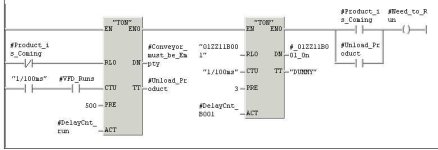A frequent question I get from clients is: does anyone make a C or C++ complier (or whatever common HLL programming language is the daily favorite) to run on a PLC. I do not mean the standard IEC1131-3 which seems to have been implemented to limited degree by some vendors. STL as defined is a possible answer, if everyone implemented it.
For example, Omron cx-p 5.0 will support STL in function blocks. However you can not call another function block from inside the block. This is like driving a car with no steering!
I have a coworker who comes from the mainstream software world and he is concerned about such items as software version control, reusability of modules, structures, and good design practices. I can not argue with many of his points as they relate to good software development practices. There are many good software management tools that are simply not available in the PLC world (at least I have not found them readily available).
We are doing a project that will be sold multiple times with some customization being done for each customer. The software is quite complicated and maintaining separate copies of each program is cost prohibitive.
In my opinion ladder logic is, for the most part, a crippled form of p-code assembly language programmed visually. (Lightning rod anyone?) For many applications this is adequate and often the best solution to a problem.
My questions are: Have any of you written programs for PLC’s using standard HLL languages? Who produces these products?
For example, Omron cx-p 5.0 will support STL in function blocks. However you can not call another function block from inside the block. This is like driving a car with no steering!
I have a coworker who comes from the mainstream software world and he is concerned about such items as software version control, reusability of modules, structures, and good design practices. I can not argue with many of his points as they relate to good software development practices. There are many good software management tools that are simply not available in the PLC world (at least I have not found them readily available).
We are doing a project that will be sold multiple times with some customization being done for each customer. The software is quite complicated and maintaining separate copies of each program is cost prohibitive.
In my opinion ladder logic is, for the most part, a crippled form of p-code assembly language programmed visually. (Lightning rod anyone?) For many applications this is adequate and often the best solution to a problem.
My questions are: Have any of you written programs for PLC’s using standard HLL languages? Who produces these products?










